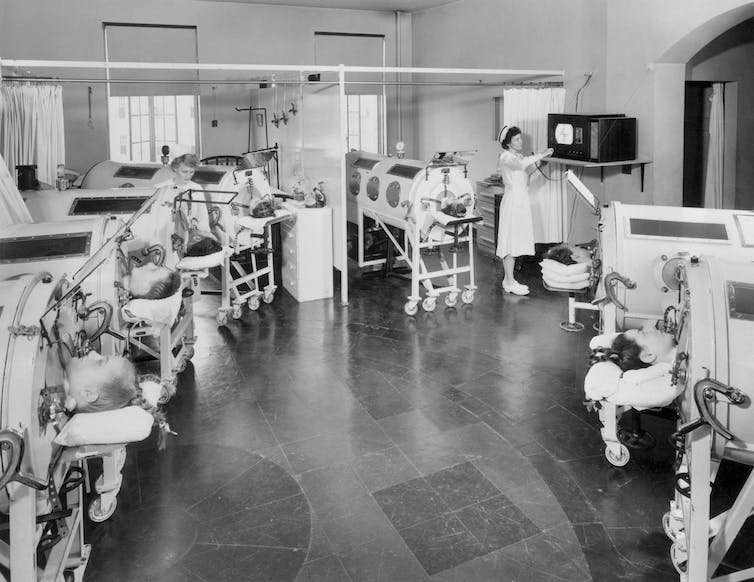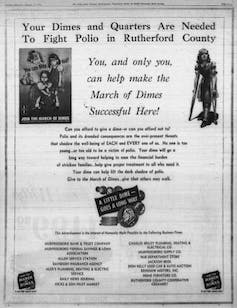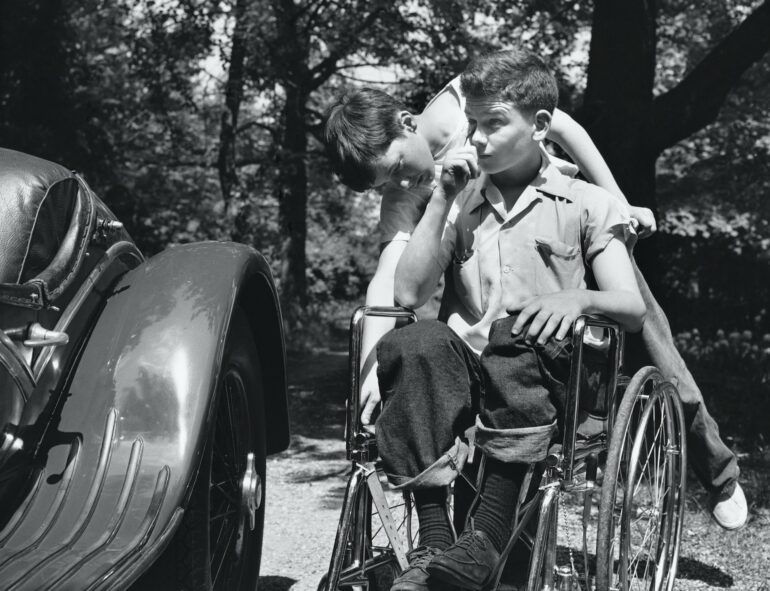“Got Polio? Me neither. Thanks, Science.”
Messages like this are used in memes, posters, T-shirts and even some billboards to promote routine vaccinations. As this catchy statement reminds people of once-feared diseases of the past, it – perhaps unintentionally – conveys the message that polio has been relegated to the history books.

This pro-science message uses a popular ‘cheers’ meme format.
Phrasing that aims to encourage immunizations by highlighting their accomplishments implies that some diseases are no longer a threat.
Few people today know much about polio. In 2022, only one-third of surveyed adults in the U.S. were aware that polio has no cure. Moreover, a 2020 poll had found that 84% of adults viewed vaccinating children as important, a 10% decline from 2001. The COVID-19 pandemic amplified anti-vaccination messaging, while also delaying routine immunization.
Vaccine-preventable diseases are far from eradicated. Measles outbreaks in unvaccinated or under-vaccinated American communities have begun resurfacing in the past few years, despite a 2000 declaration that the virus had been eliminated in the U.S. Pertussis cases have been on the rise, with more than 18,000 cases reported in 2019. And in July 2022, polio reappeared in an unvaccinated New York man – the first U.S. diagnosis since 1979. This case helped return attention to polio, causing at least some young adults to wonder about their own vaccination status.
A shift in focus to immunization in developing countries has further lulled Americans into a false sense of security. While global approaches have been effective and are certainly needed, as the author of “Constructing the Outbreak: Epidemics in Media and Collective Memory,” I suggest that the celebratory messaging is no longer as effective as it once was and runs the risk of making it seem as if polio only lives in history books.

Polio patients at Baltimore’s Children’s Hospital watched television from inside the iron lungs that breathed for them.
Bettmann via Getty Images
Campaigning against a devastating disease
Before vaccines, polio – called infantile paralysis or poliomyelitis – was the most feared childhood disease in the U.S. Frequently affecting elementary school kids, the disease sometimes presented like a cold or flu – fever, sore throat and headache. In other cases, limb or spinal pain and numbness first indicated that something was wrong. Paralysis of legs, arms, neck, diaphragm or a combination could occur and, depending on the area affected, render patients unable to walk, lift their arms, or breathe outside of an iron lung.

Full page ads like this one from 1953 solicited funds to help polio patients.
March of Dimes
Only time could reveal whether the paralysis was permanent or would recede, sometimes to return decades later as Post-Polio Syndrome….
